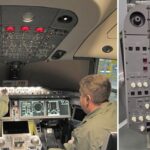The Ural Civil Aviation Plant (UZGA) and the TESIS company announced cooperation in the field of interdisciplinary modeling and creation of digital twins in the development of advanced aviation equipment with the help of the domestic software package FlowVision. This was reported in the press service of TESIS.
FlowVision is a solution created by specialists of TESIS engineering company and designed for modeling of three-dimensional fluid and gas flows, heat transfer, including coupled heat exchange, fluid-structure interaction (FSI), combustion and chemical reactions, electromagnetic hydrodynamic processes. The product is designed for designers, engineers and technologists. With its help it is possible to solve interdisciplinary problems for the needs of shipbuilding, aviation, rocket science, power engineering and many other industries important for the economy.
Modern conditions of development and production of aviation equipment require to increase the volume of mathematical modeling not only in separate applications – aerodynamics, strength, heat transfer, acoustics, but also to find solutions at the intersection of different disciplines. FlowVision has been used for more than 20 years in the aircraft industry in the development of passenger, transport and special-purpose aircraft.
The implementation of FlowVision at UZGA is part of the work on import substitution of foreign software for domestic designs, as well as for compliance with the new annex to the AP25 Airworthiness Standards: “Annex O: Conditions of supercooled large-drop icing (SLD)”. The study of the process of ice formation on aircraft structural elements will allow UZGA to improve aviation safety of the aircraft being built.
The functionality for modeling icing and de-icing system operation in FlowVision appeared as a result of many years of scientific and technical cooperation based on theoretical and experimental work of aviation industry specialists and FlowVision developers.
The decision to implement FlowVision at UZGA was preceded by joint work, where FlowVision was comprehensively evaluated for accuracy of the solution, convenience and speed of operation. Easy access to the software developer and TESIS methodologists with personal experience in the aviation industry was of great importance.







